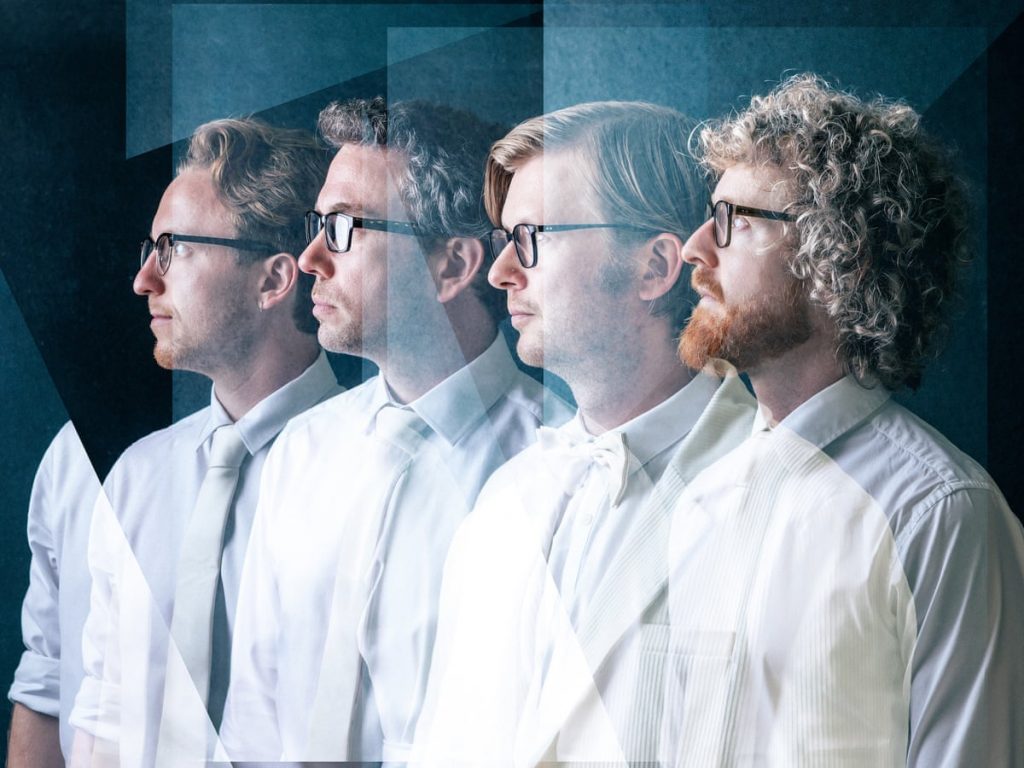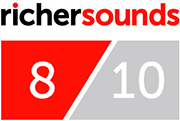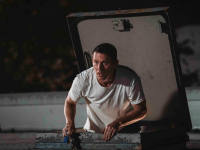
Even somehow managing to eschew the term of ‘prog’, Public Service Broadcasting are back with another album with their distinct, conceptual and sometimes borderline bizarre soundscapes.
Taking inspiration, and their name, from public archive footage as well as collaborating with relatively unknown (and some very famous) artists – the London trio (with unashamedly hipster names, even if they are real, Mr Wilgoose Esq.) defy much genre classification. Having somehow charted despite a distinct lack of normal vocals or traditional song structure, this is the fourth studio album from the group.
Der Sumpf (Sinfonie der Grossstadt) is a suitable dramatic name for the brooding piece that opens the album – sounding somewhere between a Hans Zimmer period piece and something that wouldn’t be amiss in the Blade Runner series. There is sci-fi ‘warps’ over the pounding synth rhythms which eventually give way to gentle bells.
Unlike previous work such as Every Valley (a piece that sampled from British Pathe archives surrounding news footage surrounding Welsh Miners, their families and the strikes) this album feels conceptual but doesn’t seem to stitch it all together with an overarching story.
One similarity here however, is the use of archive footage to tear sound and voice samples from – usually from, yes, public service broadcasts…
Here, this is most clear in Der Rhythmus der Machinen, where a clear English received pronunciation announces ‘machines will do the heavy work, men will supervise the machines’. As the song builds, the guest German vocalist Blixa Bargeld leads the track to its crescendo. If you want the full meaning of the song, I’d suggest running Google translate or similar.
The Germanic song names are reinforced with vocals in, you guessed it, German. In Im Licht, we hear the title repeated constantly in the refrains with robotic distortions and 80’s keyboard lines reminiscent of Kraftwerk. Having previously used James Dean Bradfield for their Wales-focussed album, you may think they’d do the same here – they haven’t, it just feels like a loose homage.
A later track, People, Let’s Dance, also feels like an homage. This time to Chemical Brothers – right down to the video of dancers (well, rollerskaters) in unitards (for reference, the track from the seeming inspiration is ‘Go’). The bassy, rhythmic track is perfectly balanced by guest vocalist EERA – whose voice shifts octave, but remains mechanically flat in line with the underlying track throughout.
The album, much like previous work, is brilliantly built throughout. It’s a labour that has probably taken an astonishing amount of work behind the scenes.
It’s not without odd bumps however. Ich und die Stadt, whilst technically impressive, is a strange track that feels somewhere between meditative spa soundtrack, to something used to hypnotise Alex DeLarge in A Clockwork Orange – so it’s more than a little odd.
Perhaps the best listen on the track is the largest on the album – so much so it’s been split into three songs, Lichtspiel I: Opus (aptly named), Lichtspiel II: Schwarz Weiss Grau and finally, Lichtspiel III: Symphonie Diagonale. The three songs are vastly different to one another, however when played back to back, fit much like a classical composition or opera. They somehow manage to structurally complement each other.
Sadly, the album is led out by the aforementioned odd song – so the ending falls a little flat. A shame considering the rest of the album is a solidly built concept that definitely bears listening attention, even though it doesn’t quite reach the peaks of previous albums from the group.

Author: Steve, Cardiff store





